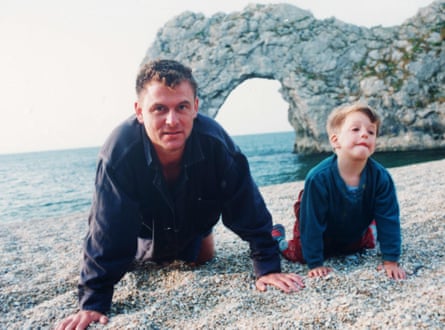On the desolate streets of Boris Yeltsin’s Moscow in the mid-90s, a four-year-old boy named Ivan Mishukov walked out of the home he shared with his mother and his alcoholic stepfather and began living with a pack of wild dogs. For two years, he ran with the mutts, begging for food that he distributed among them and curling up with them at night to protect himself from the harsh climate. The police tried several times to apprehend him, only to be thwarted in their attempts by his snarling posse. Eventually, he was packed off to a children’s shelter. He stopped growling and went back to speaking. “He appears to be just like any other Moscow child,” wrote Michael Newton in his book Savage Girls and Wild Boys: A History of Feral Children. “Yet it is said that, at night, he dreams of dogs.”
The story, which was first reported in July 1998, has been fictionalised in works including Eva Hornung’s novel Dog Boy and the play My Life with the Dogs by the theatre company New International Encounter. But it is Hattie Naylor’s stark, haunting play Ivan and the Dogs that has inspired a new film from the British director and artist Andrew Kötting. Lek and the Dogs uses Ivan’s story to complete Kötting’s Earthworks trilogy, each instalment of which features the character Lek, played by the French actor and performance artist Xavier Tchili. The 2001 film This Filthy Earth was caked in mud and grime, while Ivul, from 2009, took place largely in the treetops.
The new picture burrows beneath the earth, tracing the subterranean-dwelling Lek/Ivan on a journey into his “disrupted” mental landscape and a past fraught with trauma. Kötting riffs imaginatively on the material, amplifying its resonances and peculiarities on every level: visual, audio and philosophical. He stitches archive footage into the fabric of the film, making its texture amorphous, mottled and strange; locations range from French caves to a chalky Chilean ghost-town. The spine of the picture, though, is that enduring story.
“It’s Romulus and Remus or The Jungle Book,” Naylor says. “It’s an archetypal story that’s embedded in us. And it works, I think, because it taps into our own confused relationship with animals and our own wildness, that question of whether it’s still there in us. The play has done particularly well in places where there has been a very recent collapse. It’s been all around Brazil. The poverty, the abandoned animals, they can still see it and feel it.” It was Newton’s book that introduced Naylor to Ivan. “There was very little information to go on, so in my version he leaves because he is hearing his stepfather beat up his mother. Then I researched what was happening to kids at that time. They were being abandoned, just like dogs were, because there was simply no money. Society was collapsing.”

Naylor met Kötting in the 80s, when they were students at the Slade School of Fine Art. “We found each other in the basement, messing around with sound,” she recalls. She later named her theatre company after his 1996 debut feature, Gallivant, a warped and beguiling documentary in which the director travels the coastline of mainland Britain in the company of his grandmother and his seven-year-old daughter, Eden, who has the rare genetic condition Joubert syndrome. Lek and the Dogs, though, is Naylor and Kötting’s first collaboration. “He sort of destroyed my play,” she laughs. “But it’s an amazing piece of work. He’s an auteur, isn’t he? A one-off.”
There is no disputing that. I travel to St Leonards in East Sussex, where Kötting lives. He meets me at the station, wheeling a bicycle and wearing a patched blue “upcycled” shirt made by his wife, Leila. He is 58, stocky and strong, with a ruddy face and spiky hair.
As we eat fish and chips on the seafront, his eyes are darting and alert, always on the lookout for a telling detail. He points out the violent flapping of the deckchair fabric (“If I were filming you, I’d want to record that”). He gestures to a yellow buoy on the horizon, which he uses as a marker on his regular swims out to sea, and the bolthole in the distance that belongs to his friend and collaborator Iain Sinclair. Their projects together include Swandown, in which they piloted a swan pedalo from Hastings to the Olympic Park, and Sinclair’s book London Overground, about the pair’s perambulations around the “ginger line”.
We repair after lunch to Kötting’s studio in Hastings Old Town. Paintings by Eden, who is now 30 and an accomplished artist, hang on the walls and from the ceiling. The nerve centre is a shed he has assembled inside the studio and into which he retreats to do most of his editing and tinkering, playing around with footage and sound design. It was Naylor, he says, who kept him on track as they wrote Lek together. “She was always banging on about story. ‘We can’t just be looking at stuff, we’ve got to respect the story.’ I gave up reading novels years ago. I lose interest. I’m not attracted to the linear. Collage is so much more satisfying. You can jump in and out and it still makes sense. It holds itself together. But I knew there was something in Hattie’s play that I could use as a springboard.”
The director has always relied on “the angels of happenstance” as part of his creative process. Many of the visual coups in Lek and the Dogs were accidental: the discovery of a pile of abandoned shoes in the desert; a pet cemetery that Kötting came across after his preferred ending of Lek playing Pied Piper to a pack of dogs proved impossible to shoot. Most startling are the wriggling, foetus-like creatures seen at the start of the film. I had taken them to be animatronic or stop-motion models. Not so, says Kötting: they were newborn baby loir (dormouse-like creatures) that dropped on to Eden’s desk while she was drawing in the family’s other home in the Pyrenees. “I went in there because I heard her laughing and calling me: ‘Papa, papa!’ I thought: ‘What the fuck are they?’ I got my camera and left it running. They were dead, but every now and then they would twitch. I hadn’t even started thinking about Lek at that point. Manna from heaven.”

When he came to grade the footage for the film, he made sure it matched the tone of Tchili’s whitened skin as he scampers on all fours through the desert.
The picture has an apocalyptic air that seems uncomfortably pertinent. “We’ve got the enemy now, haven’t we? Before, there was Thatcher. Now, it’s Brexit, North Korea, whatever. This is what happens. We build toward a climax and then it all peters out. I don’t know. I’m no Pollyanna, but I’m optimistic. In five years, we’ll all still be blundering along. There’ll be a few more traffic jams on the motorway. The film does resonate, though. Did you know they’re slaughtering dogs left, right and centre in Moscow at the moment? Thousands of them, ahead of the World Cup.” He shakes his head.
Although we cover a lot of subjects, Kötting shows his only flickers of boredom when I ask what happened to Ivan later in life. “Who knows? He evaporated. Maybe he’s a drunk. Or maybe he’s playing football for Russia.”
In fact, Ivan’s trail went cold very soon after the initial story broke. “There are a few photos of him online,” says Naylor. “But it all seemed to be suppressed by Russia. They claimed it didn’t happen. The last I heard, he joined the sea cadets at 17 and managed to readjust to society.”
Kötting is content to let this sleeping dog lie. “I’m happy not knowing. The myth is the important thing. That and the fact that it’s true. We all need our mythical figures – Muhammad, Jesus, Robin Hood, Valerie Singleton – and Ivan is one of them.”

Comments (…)
Sign in or create your Guardian account to join the discussion